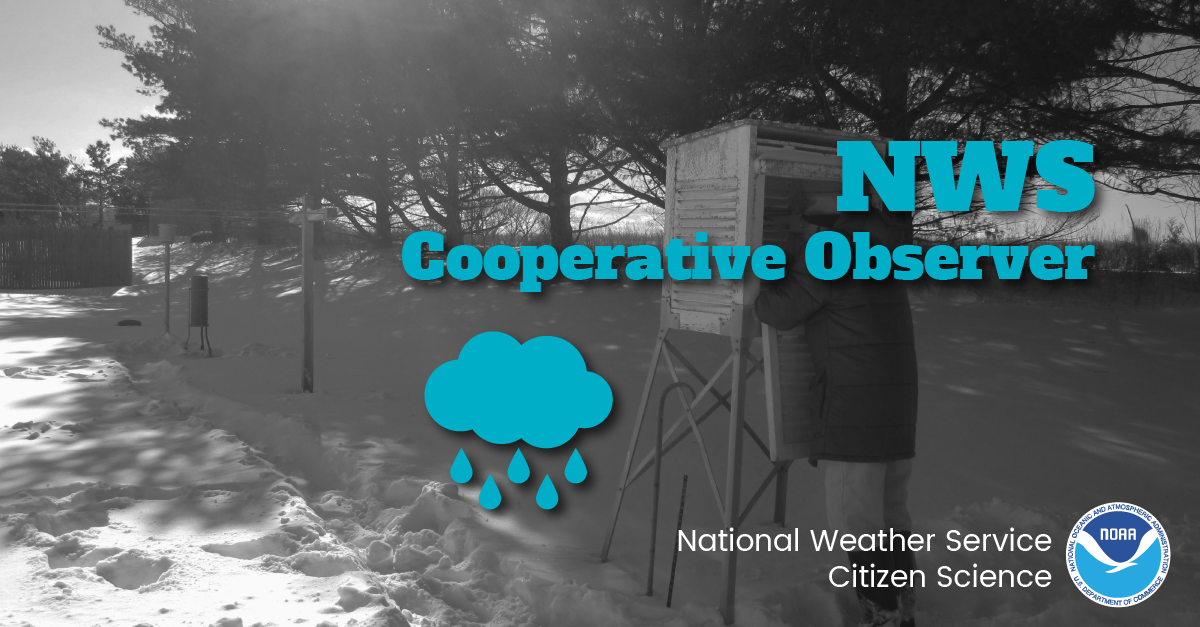Please help the NWS spread these messages on social media! Everyone is welcome to use the text and images provided below to help the NWS build a Weather-Ready Nation.
Facebook
“Kona lows” are major weather producers in the Hawaiian islands. The word ‘kona’ means ‘leeward’ in Hawaiian, which refers to the side of an island that is usually sheltered from trade winds and rainfall—but not for these storms.
Learn more weather science at weather.gov/jetstream
Twitter
“Kona lows” are major weather producers in the Hawaiian islands. The word ‘kona’ means ‘leeward’ in Hawaiian, which refers to the side of an island that is usually sheltered from trade winds and rainfall—but not for these storms.
Learn more weather science at weather.gov/jetstream
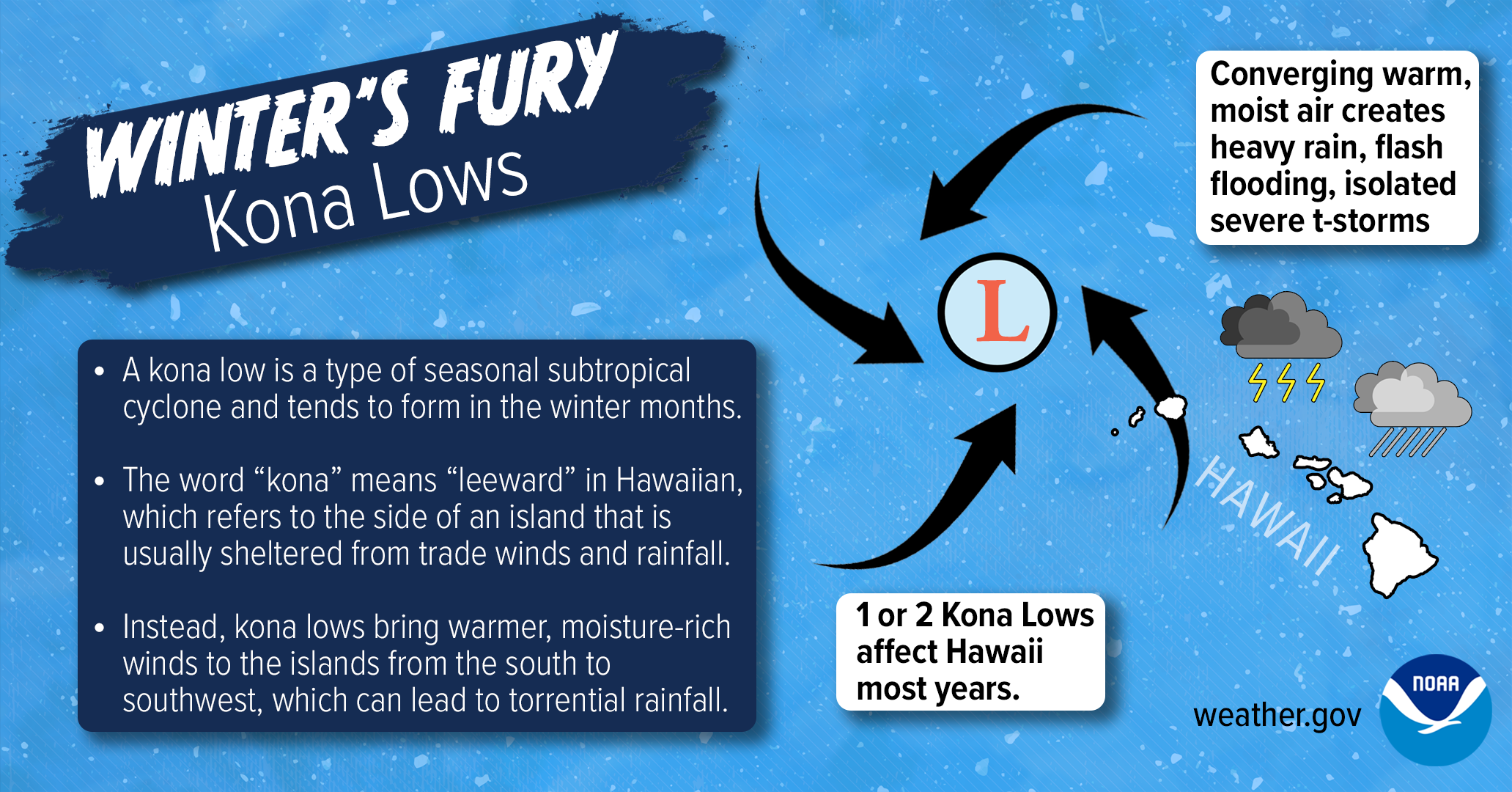
Facebook
Will there be rain, ice, or snow? This graphic explains how having different layers of warm and cold air between the clouds and the ground determines the type of precipitation that hits the ground. nssl.noaa.gov/education/svrwx101/winter/types/
Twitter
Will there be rain, ice, or snow? Find out how wintry precipitation forms! nssl.noaa.gov/education/svrwx101/winter/types/

Facebook
Not many winter storms have the potential to bury 100 million people in 1-2 feet of snow in a single day. Nor’easters are notorious for packing strong winds and copious amounts of moisture they get from the Atlantic. The heavily-populated region between Washington D.C., Philadelphia, New York City, and Boston -- the “I-95 Corridor” -- is especially impacted by Nor’easters. weather.gov/safety/winter-noreaster
Twitter
Nor’easters are notorious for big wind and copious amounts of moisture they get from the Atlantic. weather.gov/safety/winter-noreaster #WeatherReady

Facebook
Did you know that, in the northern hemisphere, winter actually occurs when the Earth is closest to the Sun? This is possible because of the way the Earth tilts on its axis. During winter, the northern hemisphere is tilting away from the Sun, causing the Sun’s rays to hit the northern hemisphere at a lower angle, and resulting in far lower temperatures. Learn more at scijinks.gov/earths-seasons/
Twitter
In the northern hemisphere, winter actually occurs when the Earth is closest to the Sun. Learn more scijinks.gov/earths-seasons/
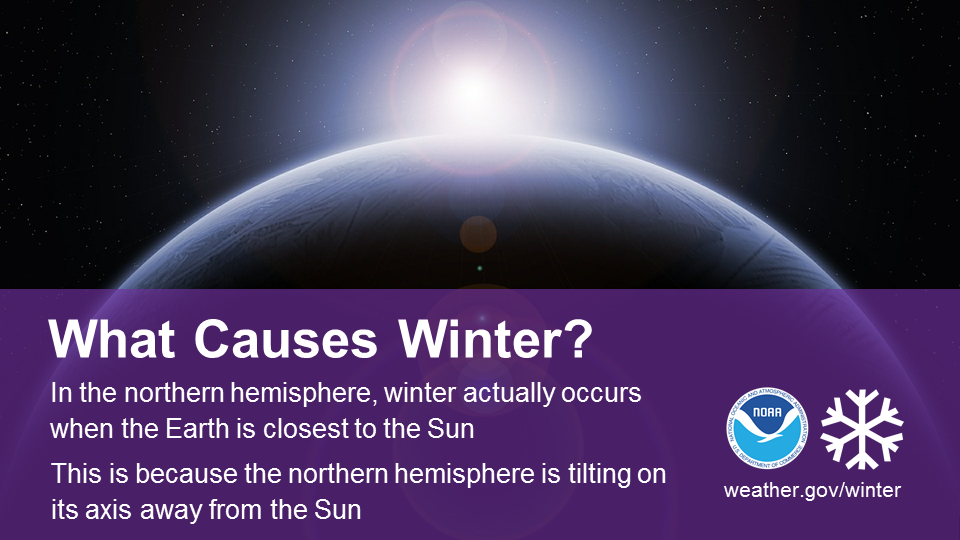
Facebook
Haboob. Funny name, dangerous weather phenomenon. Learn about haboobs and other examples of weird weather in this short video: youtu.be/vuk6gvq7Nwk #wxscience
Twitter
Haboob. Funny name, dangerous weather phenomenon. Learn about haboobs and other examples of weird weather in this short video: youtu.be/vuk6gvq7Nwk #wxscience
Facebook
The term 500-year flood doesn’t necessarily mean that it’s only going to happen one time every 500 years. Rather, it’s a reference to the probability of occurrence. youtu.be/eQFyaXDH42U #FloodScience
Twitter
The term 500-year flood doesn’t necessarily mean that it’s only going to happen one time every 500 years. Rather, it’s a reference to the probability of occurrence. youtu.be/eQFyaXDH42U #FloodScience
Facebook
Water is essential for life on Earth. However, in large enough quantities, the very substance we drink and use to grow crops can destroy homes and businesses, and can also cause fatalities. Learn all about the science of river flooding in the infographic below, and visit weather.gov/jetstream/flood for more flood science.
Twitter
Learn all about the science of river flooding with this graphic, and visit weather.gov/jetstream/flood for more flood science. #WeatherReady
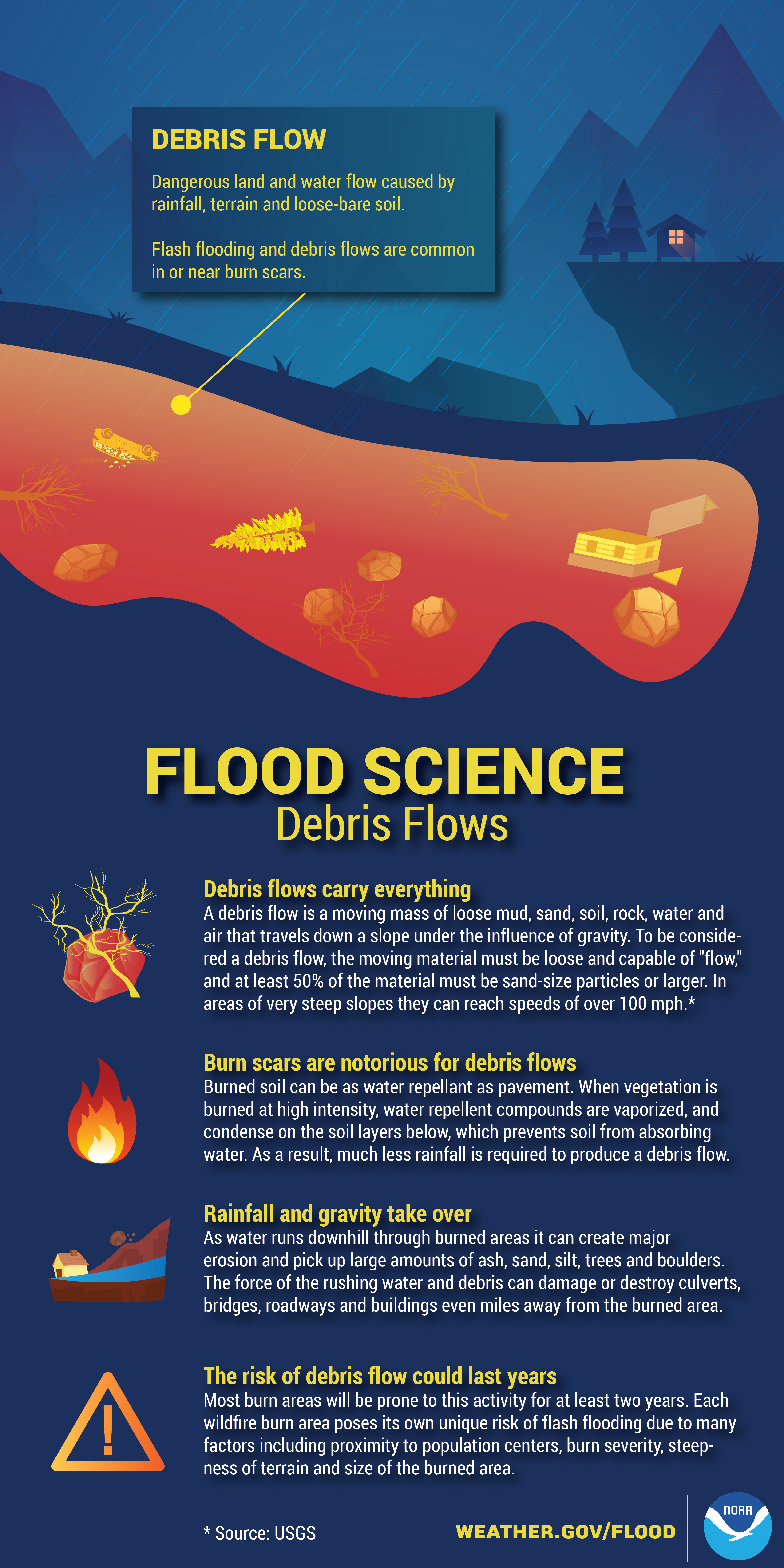
Facebook
At certain times of the year, water from melting snow can be responsible for almost all of the streamflow in a river. The processes of snowmelt are crucial in forming accurate river flood forecasts. Learn more about flood science at weather.gov/jetstream/flood.
Twitter
At certain times of the year, water from melting snow can be responsible for almost all of the streamflow in a river. The processes of snowmelt are crucial in forming accurate river flood forecasts. Learn more about flood science at weather.gov/jetstream/flood.
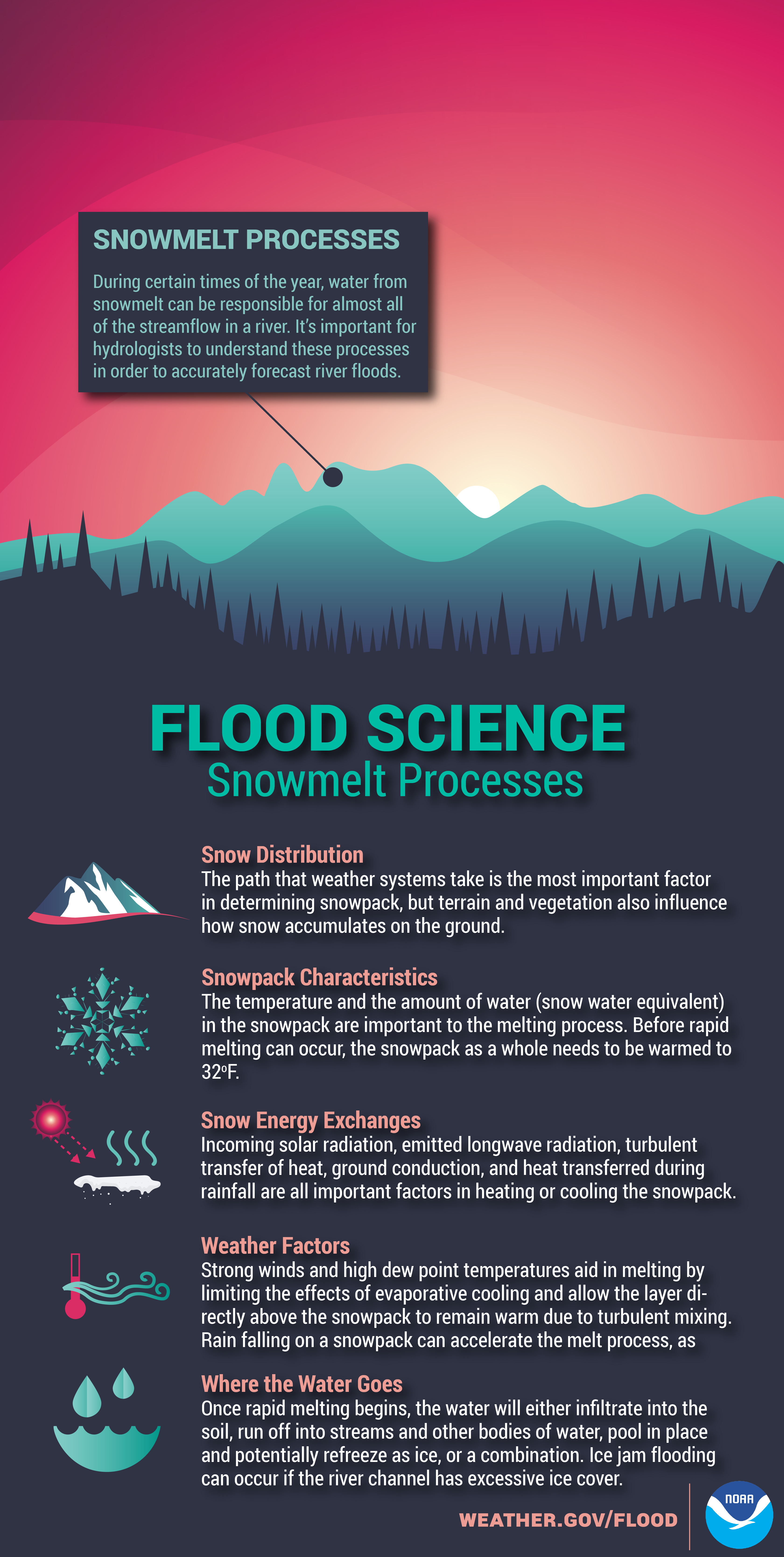
Facebook
Even without rain or snowmelt, floods can happen along any rivers, creeks, and streams. This is because of something called streamflow routing, which occurs when water volume in a river moves from upstream to downstream. Learn more about flood science at weather.gov/jetstream/flood.
Twitter
Even without rain or snowmelt, floods can happen along any rivers, creeks, and streams. This is because of something called streamflow routing, which occurs when water volume in a river moves from upstream to downstream. Learn more about flood science at weather.gov/jetstream/flood.

Facebook
Water is essential for life on Earth. However, in large enough quantities, the very substance we drink and use to grow crops can destroy homes and businesses, and can also cause fatalities. Learn all about the science of river flooding in the infographic below, and visit weather.gov/jetstream/flood for more information on river flooding.
Twitter
Learn all about the science of river flooding with this graphic, and visit weather.gov/jetstream/flood for more flood science. #WeatherReady
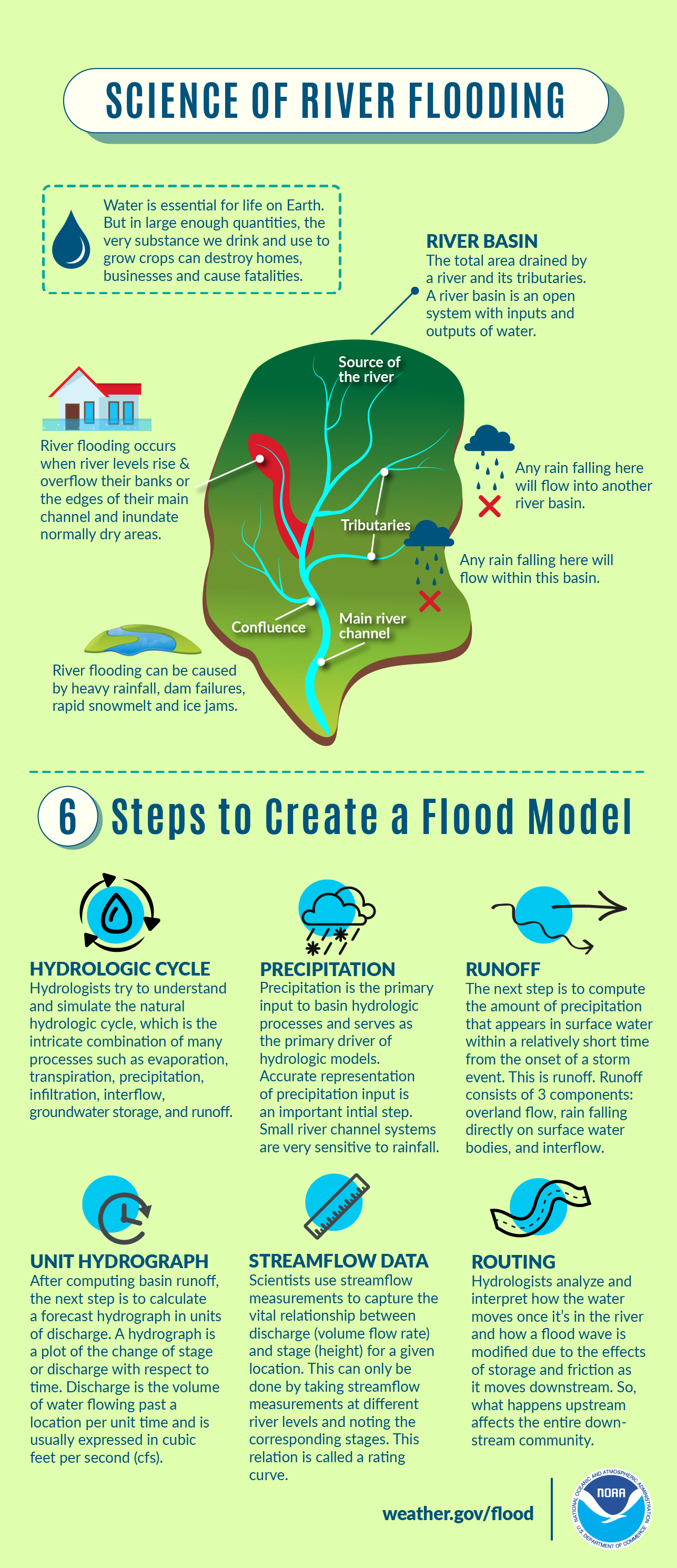
Facebook
Lake Effect snow occurs when cold air moves across warmer water. Warmth and moisture rise into the air, condensing into clouds that can produce 2 to 3 inches of snow per hour or more. Learn more weather science at weather.gov/jetstream
Twitter
Lake Effect snow occurs when cold air moves across warmer water. Warmth and moisture rise into the air, condensing into clouds that can produce 2 to 3 inches of snow per hour or more. Learn more weather science at weather.gov/jetstream

Facebook
Did you know not all blizzards involve falling snow? By definition, a blizzard includes 35+ mph winds that cause blowing snow, reducing visibility to 1/4 mile or less for at least 3 hours. If the visibility reduction comes from snow that has already fallen, it is called a ground blizzard. Whether or not the snow falls during the time of the blizzard, dangerous conditions can result. Make sure you’re prepared! weather.gov/winter
Twitter
Did you know that not all blizzards involve falling snow? Whether or not the snow falls during the blizzard, dangerous conditions can result. weather.gov/winter Be #WeatherReady!
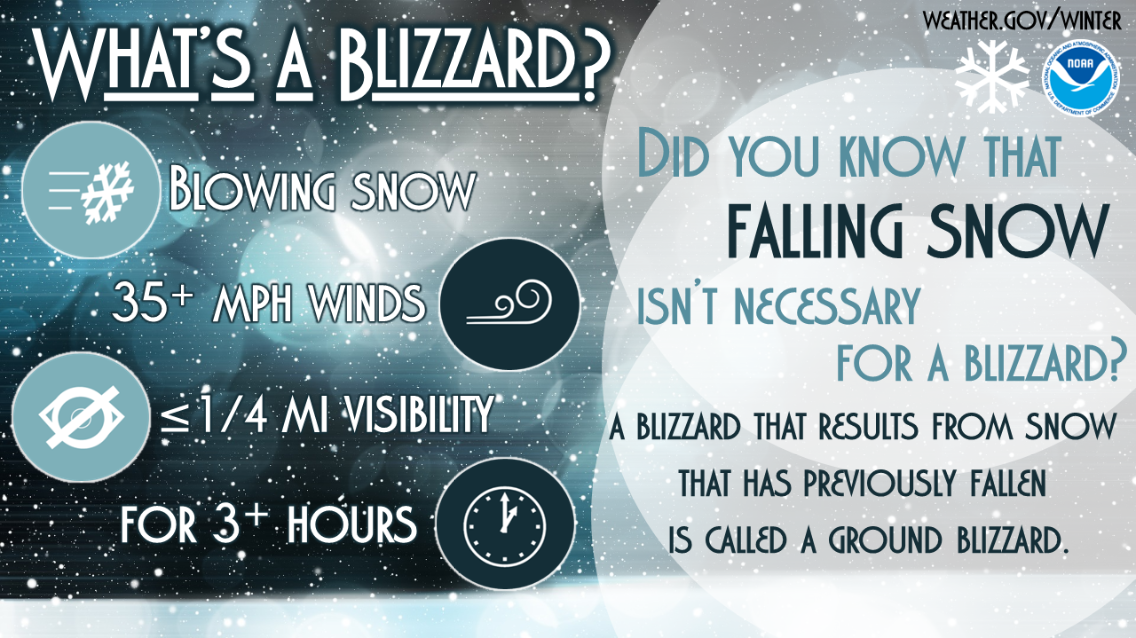
Facebook
Have you wondered why the windward side of mountains or large hills receives so much more snow than surrounding areas? This is due to upslope snow. When moist wind blows against the side of mountains/hills, the air is forced to rise (called orographic lift). As the air rises and cools, water vapor condenses, resulting in clouds and precipitation over the windward region. Conversely, the leeward side often receives less snow due to descending air.
Twitter
Why does the windward side of mountains or large hills receive so much more snow than surrounding areas? It’s because of the upslope effect. When you’re in one of these windward areas, make sure you’re #WeatherReady
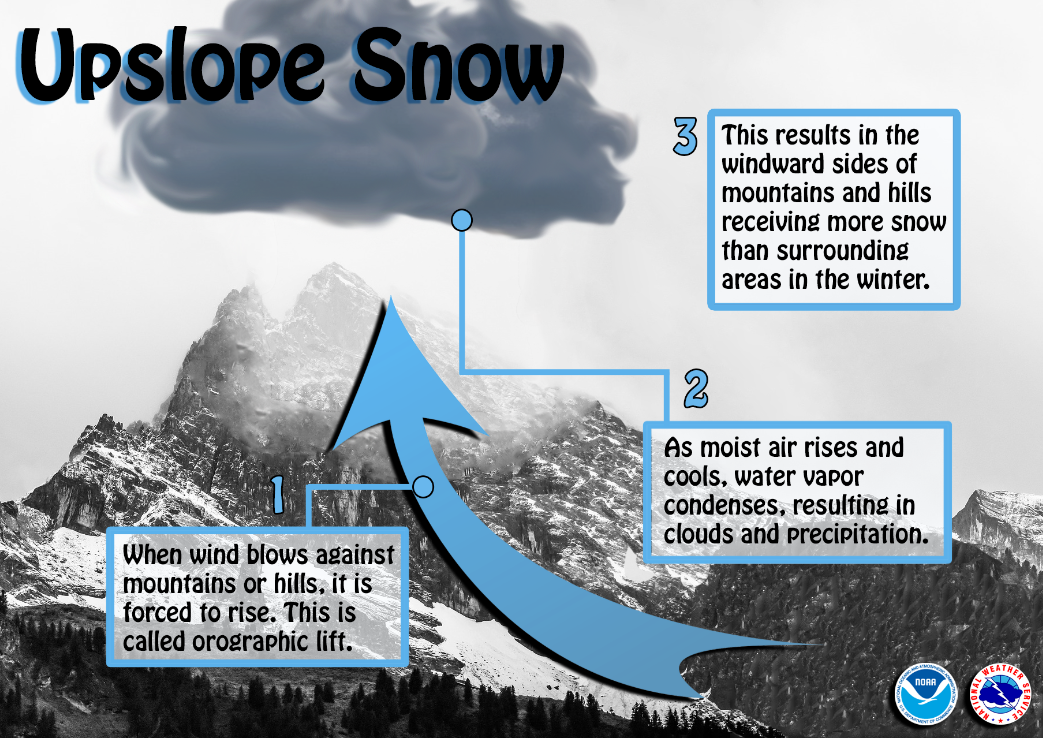
Facebook
During winter months, falling snow serves as an important source of fresh water across the world. When spring arrives, melting snow helps replenish rivers, lakes, and reservoirs. The melting snow adds much-needed moisture to the soil and helps refill underground aquifers, which are vital for growing crops and for drinking water. weather.gov/jetstream/hydro
Twitter
During winter months, falling snow serves as an important source of fresh water. weather.gov/jetstream/hydro

Facebook
Did you know that, while no two snowflakes are exactly the same, they are all six-sided? Snowflakes’ hexagonal shapes are due to the molecular structure of ice. Learn more about the science behind snowflakes: noaa.gov/stories/how-do-snowflakes-form-science-behind-snow
Twitter
Did you know that no two snowflakes are alike, but they are all 6-sided? noaa.gov/stories/how-do-snowflakes-form-science-behind-snow #SnowflakeScience

Facebook
The aurora borealis is usually green in color, although it can also appear to be a range of other colors like red, blue, pink, and purple. The color of the aurora is determined by the altitude in which it appears. Different atmosphere compounds, like nitrogen and oxygen, are found at different altitudes. When charged particles from the Sun enter our atmosphere, they interact with those compounds, and the aurora is the visible result. Depending on which compounds are being excited by the Sun’s charged particles, different colors will appear. Learn more at pwg.gsfc.nasa.gov/polar/telecons/archive/PR_E-PO/Aurora_flyer/aurora-flyer_p2.doc.pdf
Twitter
Changing colors of the aurora? It’s elemental, my dear Watson!! The color of the aurora is determined by the altitude in which it appears, as different atmospheric compounds (like nitrogen and oxygen) are found at different altitudes. More here: pwg.gsfc.nasa.gov/polar/telecons/archive/PR_E-PO/Aurora_flyer/aurora-flyer_p2.doc.pdf #SpaceWeather

Facebook
Did you know that frost can form when the official low is above freezing? The official temperature is recorded around 6ft above the ground. In a strong temperature inversion on a clear night, ground temps can be 5-10℉ cooler than the air above. youtu.be/HBn1oSWu2nE
Twitter
Did you know that frost can form when the official low is above freezing? The official temperature is recorded around 6ft above the ground, and in a strong temperature inversion on a clear night, ground temps can be 5-10℉ cooler than the air above. youtu.be/HBn1oSWu2nE
Facebook
Why do we see fog in valleys more often than other spots? First, air at higher elevations cools down, which then drains downslope into the valley. From there, a cool, stable layer forms near the ground, limiting turbulent mixing and trapping the cool, moist air. Finally, the air near the ground continues to cool until water vapor molecules are changed into small droplets of liquid water. weather.gov/safety/fog-mountain-valley
Twitter
Looking down on the clouds? Do you know how valley fog is created? weather.gov/safety/fog-mountain-valley #FogScience

Facebook
Fog limits visibility, delays air travel, brings danger to the roads, and makes things generally spooky. But, how does it form? Watch this short video: youtu.be/QkRqjcO1ROk
Twitter
Fog limits visibility, delays air travel, brings danger to the roads, and makes things generally spooky. But, how does it form? Watch this short video: youtu.be/QkRqjcO1ROk #FogScience
Facebook
Wind is just air moving somewhere else...but WHERE is it going, and WHY? Check out this short video for a primer. youtu.be/kb9oRYUzlwQ
Twitter
Wind is just air moving somewhere else...but WHERE is it going, and WHY? Check out this short video for a primer. youtu.be/kb9oRYUzlwQ #WindScience
Facebook
In little to no wind, our body is able to keep a thin layer of warmer air near it. Once the wind picks up, that layer is quickly disrupted, exposing any unprotected body parts to the full brunt of the cold.
Arctic air + brisk winds = dangerously cold wind chills.
weather.gov/safety/cold
Twitter
In little to no wind, our body is able to keep a thin layer of warmer air near it. Once the wind picks up, that layer is quickly disrupted, exposing any unprotected body parts to the full brunt of the cold.
Arctic air + brisk winds = dangerously cold wind chills.
weather.gov/safety/cold

Facebook
Santa Ana winds are strong downslope winds that blow through the mountain passes in Southern California. They are created over the Great Basin region from high-pressure air masses, which then blow down towards sea level. These winds, which can easily exceed 40 miles per hour (18 m/s), are warm and dry and can severely exacerbate brush or forest fires, especially under drought conditions. For more info, visit earthobservatory.nasa.gov/NaturalHazards/view.php?id=10727.
Twitter
Santa Ana winds are notorious for creating dangerous fire conditions. Learn how here: earthobservatory.nasa.gov/NaturalHazards/view.php?id=10727 #WindScience

Facebook
Do you know what to watch for when severe weather threatens? Check out NWS Skywarn. Help keep your community safe by volunteering to become a trained storm spotter for NOAA's National Weather Service. Potential volunteers should visit weather.gov/skywarn and contact their local NWS office. #CitizenScience
Twitter
Let’s learn about #NWSCitizenScience opportunities! Become a trained Skywarn storm spotter and help keep your community safe! weather.gov/skywarn #CitizenScience

Facebook
Ever wanted to take rain or snow measurements? Join CoCoRaHS or the Community Collaborative Rain, Hail, and Snow Network. This volunteer network of observers measures precipitation from their backyards. Any age can volunteer. Data is used by NWS meteorologists to help with forecasts. www.cocorahs.org
Twitter
Ever wanted to take rain or snow measurements? Learn more about #NWSCitizenScience and join CoCoRaHS today! Cocorahs.org #CitizenScience

Facebook
Check out the mPING (Meteorological Phenomena Identification Near the Ground) project. Weird name, cool app! You can report the type of precipitation you see where you are. No need to measure! Use the free mobile app to send reports anonymously. Reports are automatically recorded into a database, which improves weather computer models. The information is even used by road maintenance operations and the aviation industry to diagnose areas of icing. mping.nssl.noaa.gov #CitizenScience
Twitter
Check out mPING! Weird name, cool app for #CitizenScience! Report weather types via the mPing app and help improve weather model forecasts! mping.nssl.noaa.gov #NWSCitizenScience
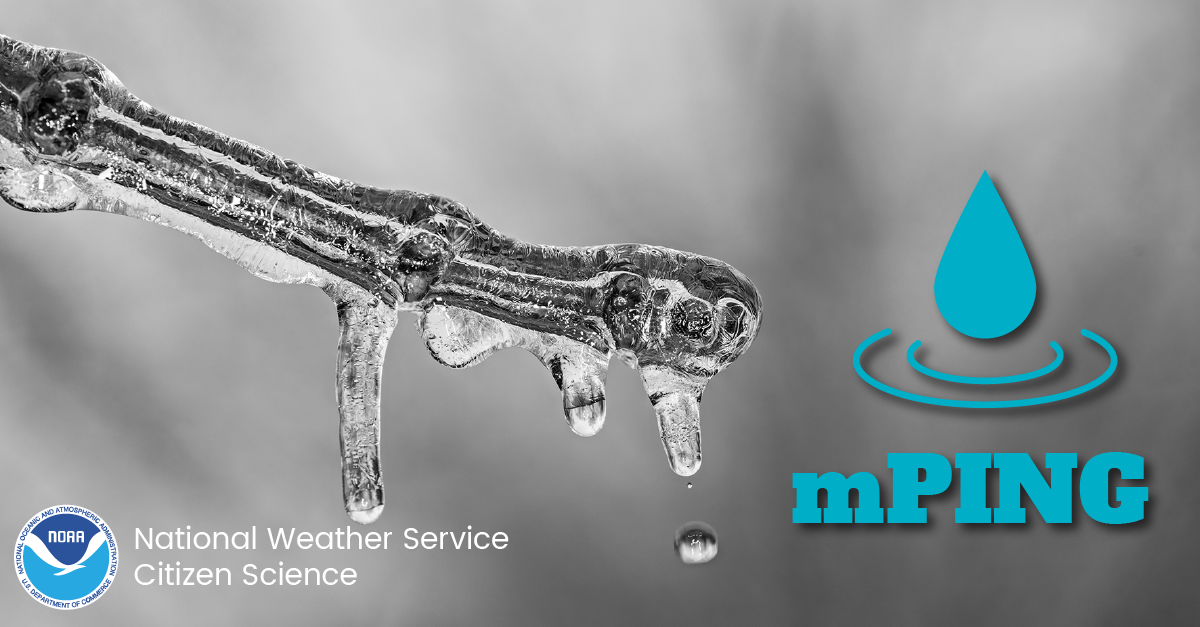
Facebook
The NWS Cooperative Observer Program (COOP) is truly the nation's weather and climate observing network of, by, and for the people. With over 8,700 volunteer observers, this program has existed since 1890 and is one of the few programs that measures snowfall and its water equivalent. Help #NWSCitizenScience and become a COOP! You can help support warnings and forecasts, and contribute to building a climatological database! For more information, visit weather.gov/coop/Overview
Twitter
Join NWS COOP! The NWS Cooperative Observer Program (COOP) is truly the nation's weather and climate observing network of, by, and for the people. Help support warnings, forecasts & build a climatological database! weather.gov/coop/Overview #NWSCitizenScience
